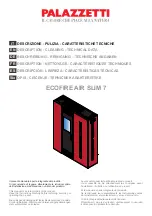
Quick Start Guide
To get the most out of your stove you should take the time to read the instructions provided. If for
any reason you don’t have these instructions contact your retailer and request a copy.
This guide is intended to help you get the best possible fire started. Even if you have previous
experience with stoves, all makes and models vary and the information below will help you gain the
optimum performance from your new stove.
Make sure both the primary (bottom) and secondary
(top) valves are open. The open position is with both
controls fully to the right.
To start a fire, create a small ‘wigwam’ of kindling
towards the back of the grate and light it using a
single firelighter.
Close the door and wait until the firelighter burns
away and the kindling is fully ignited.
Open the door and use a poker to lay the kindling
across the width of the grate.
It is best to keep the fuel towards the back of the
grate during these early stages.
Place a small kiln dried log (less than 15% moisture)
on top of the kindling and close the door.
Wet wood will cause the stove window to blacken.
Do not cover the tertiary air holes (the small holes
located at the rear of the firebox above the back
brick).
Once the log starts to burn close the primary
(bottom) valve by sliding it to the left.
If you’re continuing to burn wood use the secondary
(top) valve to control the fire, we usually recommend
half closing it but every installation will vary so try
different settings until you find one you’re happy
with. If you’re burning solid fuel, such as anthracite,
wait until you have a bed of hot ash and then add
your fuel.
The settings for solid fuel are the opposite to wood,
fully close the secondary (top) valve and control the
rate of burn using the primary (bottom) valve.
Don’t over fill the firebox, this is a very efficient
stove and will generate plenty of heat with a small
amount of fuel.
Primary Valve
Secondary Valve


























